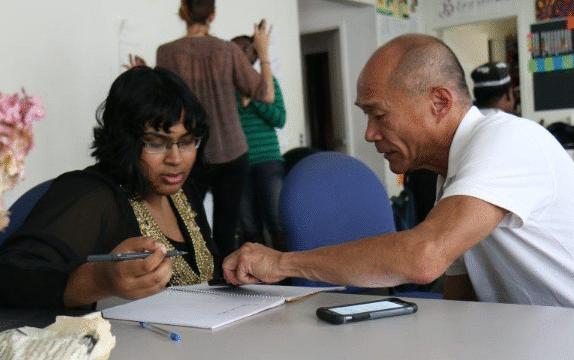In today’s fast-moving world, learning certificates
have become an essential way to showcase skills,
prove knowledge, and enhance career opportunities.
Whether earned from an online course, a professional training program, or a specialized workshop, certificates carry weight in the eyes of employers and peers. However, as the number of learning platforms grows, so does the importance of making sure a certificate is genuine. Knowing how to verify a learning certificate can protect you from misleading claims, safeguard your professional reputation, and ensure that the hard work you put into learning is recognized properly.
Verifying a certificate may sound complicated, but with the right steps, it is a straightforward process. The goal is not only to confirm that the document is real but also to make sure it comes from a reputable source. This process benefits both individuals and organizations. Learners can take pride in their achievements, while employers can confidently assess the credibility of a candidate’s qualifications.
One of the first things to consider when checking a certificate is the issuing institution or platform. Reputable organizations and universities typically have official websites where certificates can be verified. Many online learning platforms provide a unique verification link or a code printed on the certificate itself. This code can be entered into the platform’s website to confirm authenticity. If you are reviewing your own certificate, try locating this code and testing it to make sure everything is in order. If you are an employer or recruiter, asking the candidate to share the verification link is a common and professional step.
The design and details of the certificate itself also provide important clues. A genuine certificate usually includes the name of the learner, the course title, the issuing institution, and the completion date. Some also include security features such as QR codes, watermarks, or digital signatures. If anything looks unusual, such as misspellings, inconsistent logos, or vague wording, it may be worth double-checking with the institution directly. Legitimate organizations take care to make their certificates look professional and consistent with their branding.
Another useful way to verify is by contacting the issuing institution. Most learning providers have student support teams that can confirm whether a certificate is valid. Sending a polite email with the certificate holder’s name, the course details, and the certificate number, if available, can quickly provide answers. This step is particularly important when the certificate comes from lesser-known providers or when the document is being used in a professional hiring process. Institutions understand that their reputation is tied to the credibility of their certificates, so they are usually willing to assist.
In addition to institutional verification, online professional networks offer another way to check authenticity. Platforms such as LinkedIn often allow learners to share certificates publicly. When someone adds a certificate to their profile, they often include a link to the issuing body’s verification page. This not only boosts transparency but also allows colleagues, employers, and connections to see the accomplishment in context. If you come across a certificate on a professional profile, following the link can confirm whether it is valid.
For digital certificates, blockchain technology is also making verification easier. Some platforms issue certificates that are secured and stored using blockchain systems. These digital records cannot be altered or duplicated, making them highly reliable. If a certificate mentions blockchain verification, instructions are usually provided to check the record online. While not every institution has adopted this method, it is becoming more popular because of its reliability.
Employers in particular need to be careful when reviewing certificates. Hiring decisions often depend on the trustworthiness of a candidate’s credentials. By verifying certificates, employers reduce the risk of hiring someone who may not actually have the knowledge or skills required. It also ensures fairness for candidates who have put in the genuine effort to earn their qualifications. Some companies even establish formal processes where human resources staff check certificates systematically before making offers.
From a learner’s perspective, verifying a certificate ensures peace of mind. Imagine completing a course and proudly sharing your certificate, only to realize later that the verification link does not work. By checking early, you can resolve any issues with the institution before sharing the certificate publicly or using it for career purposes. It also demonstrates professionalism when you can confidently provide a working verification link to potential employers.
There are also legal and ethical considerations. Presenting false or unverifiable certificates can damage reputations and careers. On the other hand, taking the time to ensure accuracy builds trust. Organizations respect individuals who value integrity, and verified certificates become a solid part of your personal brand.
Verification is not only about preventing fraud; it is also about highlighting achievement. When certificates are authentic, they showcase the real effort you invested in learning and self-improvement. They open doors to new roles, promotions, and opportunities because they assure others of your dedication and credibility. Each verified certificate becomes a stepping stone toward long-term success.
Sometimes, learners encounter challenges when verifying. For instance, older certificates from training programs that no longer exist may be harder to confirm. In such cases, alternative proof, such as official transcripts, payment receipts, or archived web pages, may be used to support your claim. Communicating honestly with employers about the situation can also help, as most understand that education records evolve over time.
Another challenge is with informal training programs that do not provide verification systems. While these can still be valuable for personal growth, it is important to distinguish them from formally recognized certificates. If you plan to use certificates professionally, consider choosing programs that offer clear verification processes. This choice will save time and strengthen the impact of your learning.
In conclusion, learning certificates are powerful tools for personal and professional growth, but their value depends on authenticity. Verifying a certificate involves checking the issuing institution, reviewing the details carefully, using verification codes or links, contacting support teams when necessary, and exploring modern methods such as blockchain. Employers, learners, and organizations all benefit from a culture of verification because it builds trust and ensures fairness. By taking these steps, you can celebrate your learning achievements with confidence, knowing that your certificates stand as reliable proof of your dedication and skills.






